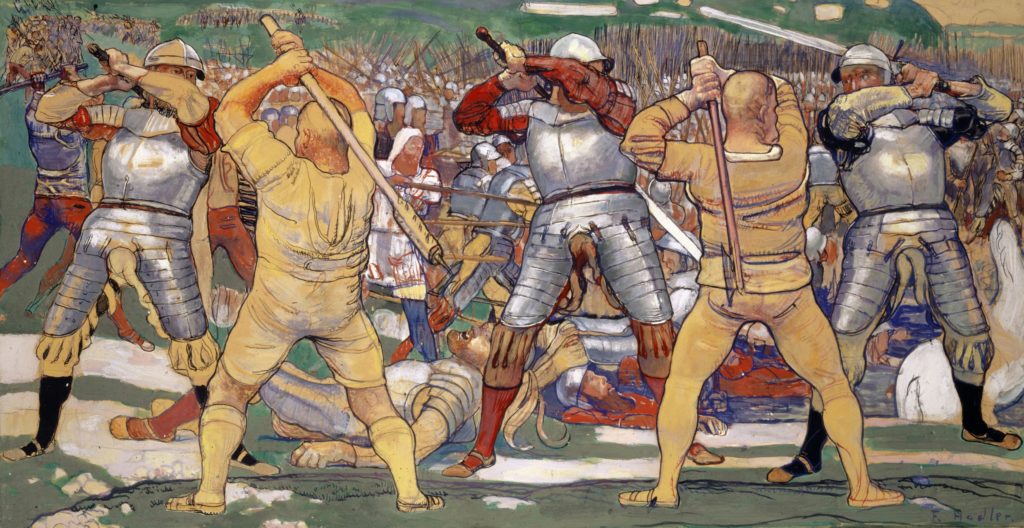This Week in History recalls memorable and decisive events and personalities of the past.
9th April 1388 – Despite being outnumbered 16 to 1, forces of the Old Swiss Confederacy are victorious over the Archduchy of Austria in the Battle of Näfels

The territory that we call Switzerland today has complex and unique origins in the murky depths of German feudal law. The earliest version of Switzerland was an alliance signed in the early 1300s between the three Alpine communities of Lucerne, Zürich, and Berne to coordinate trade and local defence.
Over time this confederation would grow to become a decentralized union of valleys and towns across the Alps that successfully resisted the rule of feudal lords through the use of their natural defences and skilled pikeman armies.
Early in their existence, the allied Swiss communities managed to win for themselves the status of ‘Imperial immediacy’; they and the areas around them were part of the Holy Roman Empire, and the status of Imperial immediacy gave these communities protection from local powerholders and made them directly subordinate to the Holy Roman Emperor rather than having a feudal lord acting as an intermediary.
This made them unique, as most other examples of Imperial immediacy were granted to cities or bishoprics, not to rural-urban alliances like the Swiss confederation.
During the course of the 14th century, the Swiss confederation would expand its membership to include more communities in the Alps, and begin to challenge the power of the feudal lords in the surrounding areas. As the Swiss were expanding their confederation, the nearby Duchy of Austria, led by the ambitious Hapsburg family, were seeking more influence over southern Germany.
During the rule of the Austrian duke Leopold III, in the 1380s, the Swiss and Austrians began to clash over control of regions of southern Germany. In January of 1386 war broke out and the Austrian army invaded the territory of the Swiss seeking to loot and pillage the countryside and to damage the harvest and prevent supplies reaching the Swiss towns.

A Swiss army confronted the Austrians near the town of Sempach on 9 July 1386 and despite only 1 700 Swiss facing off against 4 000 Austrians, including 1 500 knights, the Swiss won a decisive victory.
The defeat forced the Austrians to retreat. The Swiss attacked and laid siege to some Austrian-held towns. Some of the valleys under Austrian control revolted and joined the Swiss.

In 1388 the Austrians managed to rebuild their forces and invaded the regions which had gone over to the Swiss in an attempt to bring them back into line. In February of 1388 the Austrian army drove the Swiss back and marched on the rebel areas.
The Swiss and Austrian forces met at Näfels on 9 April 1388 and a small Swiss army of 400 faced off against 6 500 Austrians.
The Swiss initially withdrew in the face of the much larger Austrian force, and the Austrians spread out and began looting and burning the countryside.
Once the Austrians were distracted, the Swiss re-emerged from the snow and fog and attacked the disorganized Austrian forces.
The Austrians were put to flight; during their retreat, they fled over a bridge which collapsed under the weight of all the men, plunging much of the Austrian force into the freezing river where they drowned. All in all the Swiss suffered around 54 casualties and the Austrians 1 700.
Shortly thereafter the Swiss and Austrians signed a treaty which recognized all the Swiss territorial gains. The Austrians would never seriously threaten Swiss independence again and the Swiss would go on to establish themselves as an important source of mercenaries for the next century.
If you like what you have just read, support the Daily Friend

